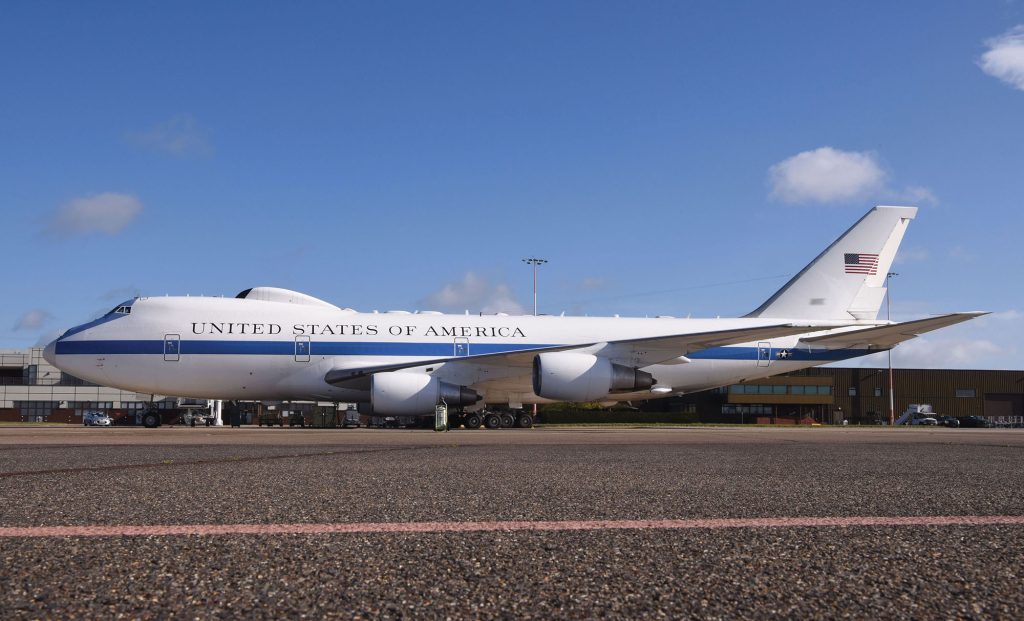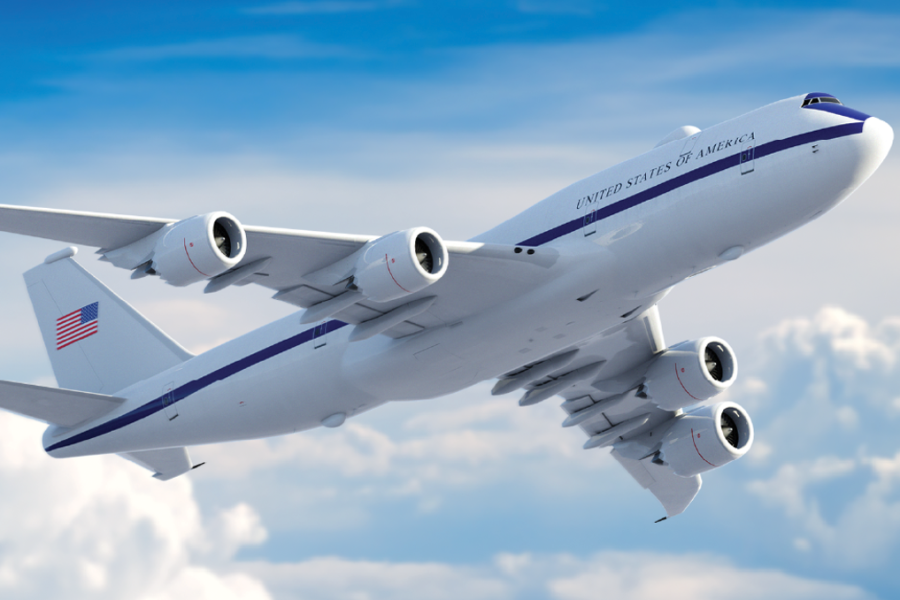It is critical that the Air Force move forward on the replacement for its E-4B “Doomsday” aircraft to keep the capability “viable” into the next decade and beyond, Chairman of the Joint Chiefs of Staff Gen. Charles Q. Brown Jr. told lawmakers May 8.
Last month, the Air Force gave the Sierra Nevada Corporation a $13.08 billion contract to build the Survivable Air Operations Center as a replacement for the E-4, officially known as the National Airborne Operations Center.
The NAOC acts as a critical communication hub for directing U.S. forces from the skies during emergencies, ranging from the destruction of ground command centers to nuclear warfare. The current fleet, a militarized version of Boeing’s 747-200 platform, consists of four aircraft, each with seating for up to 111 people. The Air Force aims to retire the E-4B by the early 2030s, replacing it with the SAOC.
At a Senate Appropriations defense subcommittee hearing, Sen. Jerry Moran (R-Kan.) asked Brown, the former Air Force Chief of Staff, why is was necessary to replace the E-4. Brown cited the fleet’s age as the primary reason.
“We have to ensure that we actually have a viable platform that we can sustain from a maintenance standpoint,” Brown said. “Because at some point, it gets more costly to maintain than to move into a new capability.”
Air Force budget documents have noted the NAOC fleet suffers from “capability gaps, diminishing manufacturing sources, increased maintenance costs, and parts obsolescence.” The fleet’s mission capable rate has been steadily declining, reaching a low of 55.4 percent in 2022, the most recent year for which data is available.

Brown also tied the SAOC effort to the Pentagon’s broader effort to modernize its overall nuclear command, control, and communications (NC3) enterprise.
“It’s very important in that it not only puts command and control in for the leadership of the nation, but also for our nuclear command and control as well,” Brown said. “So, it plays a key role to provide the President and national use of options to continue to operate when we have any type of crisis or contingency.”
But the SAOC won’t just replace the NAOC with a new airframe to keep flying.
“As technology advances, we want to make sure we have the most advanced capabilities that the nation has to offer and the platforms that we use, not only for our command and control, but also for our warfighters.” said Brown.
The Air Force is seeking $1.69 billion for fiscal 2025 for work on the SAOC.
The service first initiated SAOC in 2019, but the process has been delayed several times, with lawmakers expressing concerns about the progress and the E-4 fleet’s capability. To keep the NAOC flying until its scheduled phase-out, the Air Force has invested in virtual reality training for the E-4, using a 3-D scan of the interior and exterior to create training modules for maintainers and operators.
Like its predecessor, the SAOC aircraft will be built to fly outside the continental U.S. and withstand a nuclear attack to keep the government running from the air during a crisis. Work will be performed across four states, including Sparks, Nev., where the company’s headquarter is located, and is expected to be completed by July 2036.
